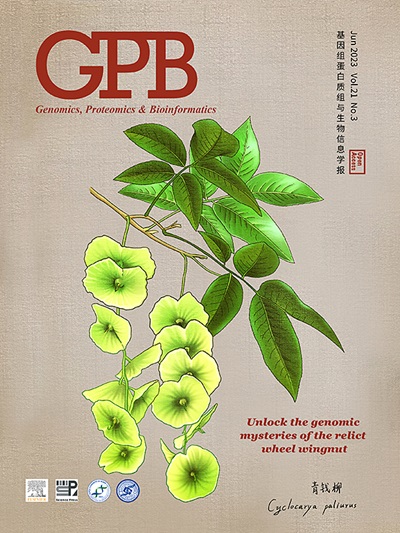Dynamic Spatial-temporal Expression Ratio of X Chromosome to Autosomes but Stable Dosage Compensation in Mammals
IF 7.9
2区 生物学
Q1 GENETICS & HEREDITY
引用次数: 0
Abstract
In the evolutionary model of dosage compensation, per-allele expression level of the X chromosome has been proposed to have twofold up-regulation to compensate its dose reduction in males (XY) compared to females (XX). However, the expression regulation of X-linked genes is still controversial, and comprehensive evaluations are still lacking. By integrating multi-omics datasets in mammals, we investigated the expression ratios including X to autosomes (X:AA ratio) and X to orthologs (X:XX ratio) at the transcriptome, translatome, and proteome levels. We revealed a dynamic spatial-temporal X:AA ratio during development in humans and mice. Meanwhile, by tracing the evolution of orthologous gene expression in chickens, platypuses, and opossums, we found a stable expression ratio of X-linked genes in humans to their autosomal orthologs in other species (X:XX ≈ 1) across tissues and developmental stages, demonstrating stable dosage compensation in mammals. We also found that different epigenetic regulations contributed to the high tissue specificity and stage specificity of X-linked gene expression, thus affecting X:AA ratios. It could be concluded that the dynamics of X:AA ratios were attributed to the different gene contents and expression preferences of the X chromosome, rather than the stable dosage compensation.
哺乳动物X染色体与常染色体的动态时空表达率但具有稳定的剂量补偿。
在剂量补偿的进化模型中,X染色体的每个等位基因表达水平被认为具有两倍的上调,以补偿其在男性(XY)中与女性(XX)相比的剂量减少。然而,X连锁基因的表达调控仍然存在争议,并且仍然缺乏全面的评估。通过整合哺乳动物的多组学数据集,我们研究了转录组、翻译组和蛋白质组水平上的表达比率,包括X与常染色体(X:AA比率)和X与直向同源物(X:XX比率)。我们揭示了人类和小鼠在发育过程中的动态时空X:AA比率。同时,通过追踪鸡、鸭嘴兽和负鼠中同源基因表达的进化,我们发现人类中的X连锁基因与其他物种中的常染色体同源基因在不同组织和发育阶段的稳定表达率(X:XX≈1),表明哺乳动物中有稳定的剂量补偿。我们还发现,不同的表观遗传学调控有助于X连锁基因表达的高组织特异性和阶段特异性,从而影响X:AA比率。可以得出结论,X:AA比值的动态归因于X染色体的不同基因含量和表达偏好,而不是稳定的剂量补偿。
本文章由计算机程序翻译,如有差异,请以英文原文为准。
求助全文
约1分钟内获得全文
求助全文
来源期刊

Genomics, Proteomics & Bioinformatics
Biochemistry, Genetics and Molecular Biology-Biochemistry
CiteScore
14.30
自引率
4.20%
发文量
844
审稿时长
61 days
期刊介绍:
Genomics, Proteomics and Bioinformatics (GPB) is the official journal of the Beijing Institute of Genomics, Chinese Academy of Sciences / China National Center for Bioinformation and Genetics Society of China. It aims to disseminate new developments in the field of omics and bioinformatics, publish high-quality discoveries quickly, and promote open access and online publication. GPB welcomes submissions in all areas of life science, biology, and biomedicine, with a focus on large data acquisition, analysis, and curation. Manuscripts covering omics and related bioinformatics topics are particularly encouraged. GPB is indexed/abstracted by PubMed/MEDLINE, PubMed Central, Scopus, BIOSIS Previews, Chemical Abstracts, CSCD, among others.
 求助内容:
求助内容: 应助结果提醒方式:
应助结果提醒方式:


